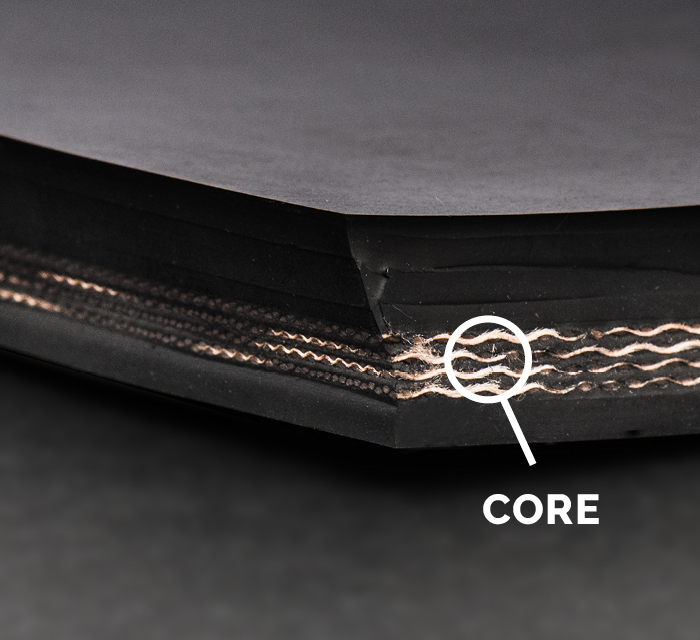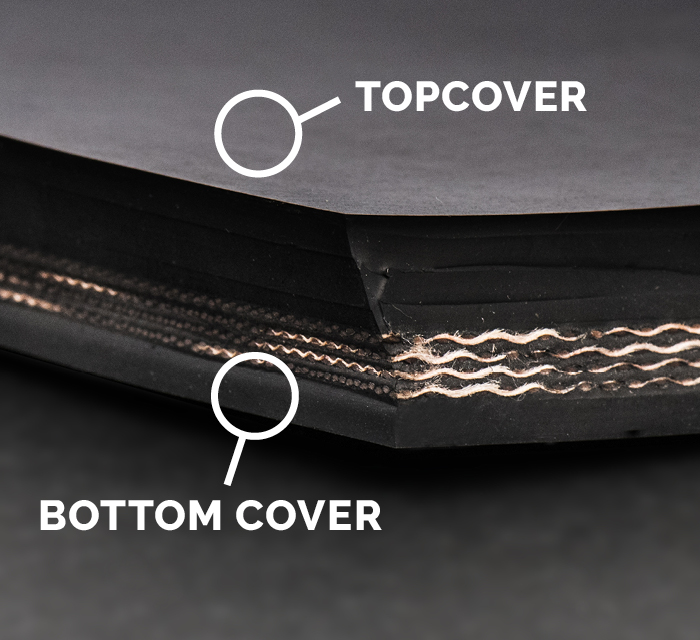Conveyor belt structure
Conveyor belts are comprised of three component parts: Core, top- & bottom cover.

The core
The core is designed to transmit and absorb the forces exerted on the belt – primarily the pull of the motorised pulley. Secondly, the core must absorb any impact on the belt caused while loading material and as the loaded belt passes over the supporting rollers.
The core is engineered with one or more layers of textile with rubber on both sides to provide adherence and flexibility. The term “warp” is used to describe the lengthwise direction and “weft” to describe the transverse direction.
The textile core may have the same or different materials in the warp and weft. Each is given a letter, e.g. EP, where E denotes that there is polyester in the warp, and P that there is polyamide in the weft.
Top & Bottom cover
The covers protect the core and ensure that there is friction between the belt and the drive- pulley/material. The covers must also withstand the effects of the material conveyed- thus the correct quality must be selected, such as oil-resistant, heat-resistant, or wear-resistant – or a combination of these.
Conveyor belts are also available with i.e., steel-reinforcement, steel cords or aramid weave. These types of belts are mainly used in very long conveying systems and in extremely heavy-duty and abrasive applications.

The most common core materials are:
Polyester (E)
Synthetic chemical fibres such as Terylene, Trevira, Diolen and Tetoron. Polyester textiles are unaffected by moisture and micro-organisms.They are very flexible, have low elongation and are acid-resistant.
Polyamid (P)
These synthetic chemical fibres, also known as nylon and perlon, have more or less the same properties as polyester although not as low elongation.
Polyester-Polyamid (EP)
An EP fabric has polyester in the warp and polyamide in the weft. This combination provides optimal benefits in the textile:
• Low elongation (especially important in elevator belts)
• High impact-resistance
• High strength compared to weight
• Very flexible = good trough shape
Polyester textiles are unaffected by moisture and micro-organisms and are very flexible, have low elongation and are acid-resistant.